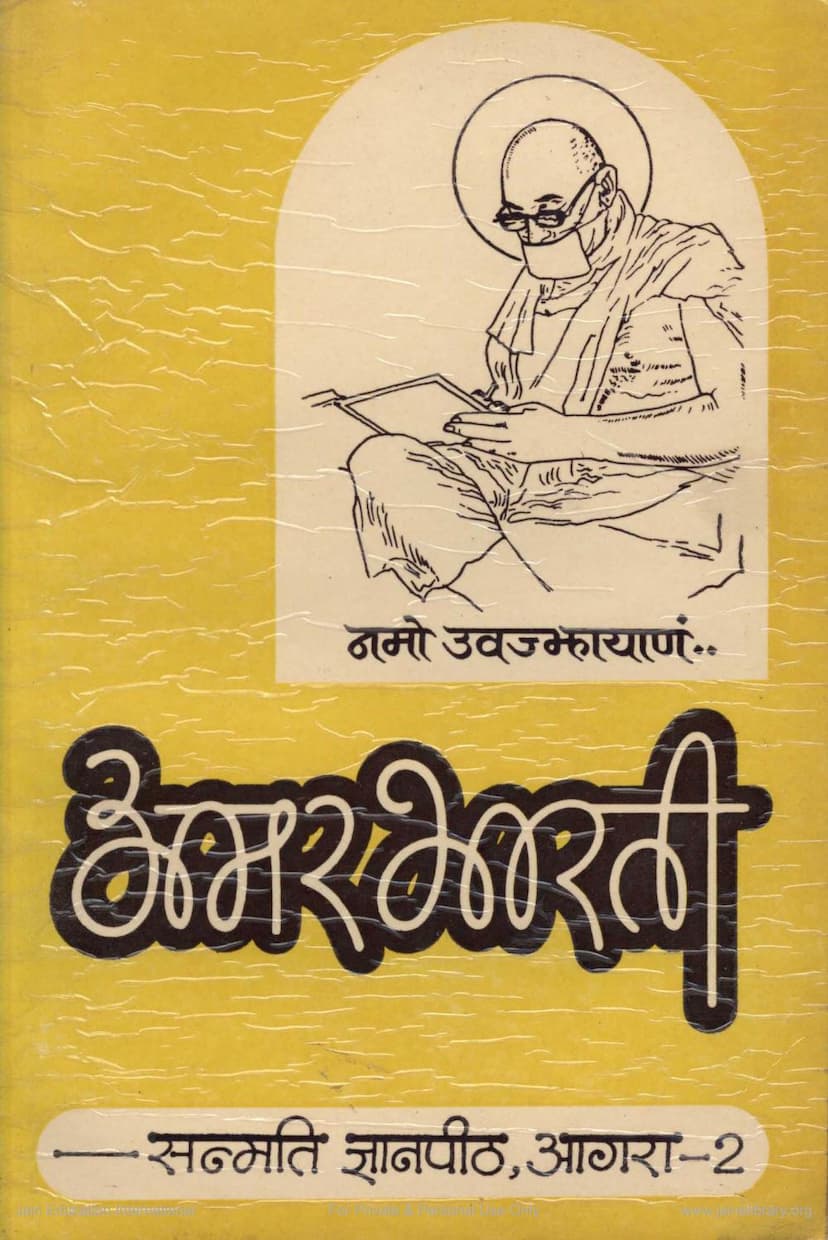Amarbharti
Added to library: September 1, 2025

Summary
Here's a comprehensive summary of the Jain text "Amarbharti" by Upadhyay Amar Muni, based on the provided pages:
Book Title: Amarbharti Author: Upadhyay Amar Muni Publisher: Sanmati Gyan Pith, Agra
Overall Theme and Purpose: "Amarbharti" is a compilation of profound and inspiring discourses (pravachans) by Upadhyay Amar Muni. The book aims to guide individuals towards spiritual upliftment, ethical living, and a deeper understanding of Jain philosophy and culture. The discourses are presented in a concise yet impactful manner, suitable for busy modern lives. They offer solutions to life's existential questions, providing a sense of direction and purpose.
Key Concepts and Recurring Themes:
- The Essence of Indian Culture: The text emphasizes that true Indian culture is not just about arts and literature but also about simplicity, sincerity, cooperation, and mutual understanding. It's like a ever-flowing Ganga, offering nourishment and absorbing smaller streams, promoting unity in diversity.
- The Role of Saints and Ascetics: Jain saints and ascetics are portrayed as vigilant guardians of Indian culture. Their lives, dedicated to contemplation and service, are instrumental in keeping the flame of Indian culture alive, even through challenging times. Their teachings, delivered in vernacular languages, reached the masses, providing spiritual guidance and moral strength.
- The Power of Thought and Action (Vichar and Achar): Jain culture's core principle is the harmony between thought and action. These are seen as two indispensable wings for spiritual progress. Pure thoughts coupled with righteous actions lead to liberation.
- The Nature of the Soul and Self-Realization: The text stresses that the soul is inherently pure and capable of achieving divine status. The journey from a state of impurity (due to passions like anger, ego, greed, and deceit) to a state of purity (kashaya-mukti) is the ultimate goal. This self-realization leads to eternal bliss and liberation.
- Understanding and Compassion (Dayā and Karuṇā): Compassion is highlighted as the most fundamental human virtue and the root of all dharma. It stems from empathy and the understanding that all beings desire happiness and wish to avoid suffering. True non-violence (Ahimsa) in Jainism is rooted in this compassionate approach.
- The Importance of Self-Control and Renunciation (Sanyam and Tyāg): Jainism advocates for self-control and renunciation, not as a means to escape life, but as a path to master oneself. This inner victory over desires and passions is considered the greatest achievement. The book draws parallels from the lives of great Jain ascetics who renounced worldly pleasures for spiritual pursuits.
- The Concept of 'Anekāntavāda' (Many-Sidedness): The text promotes an inclusive and tolerant approach to truth. It suggests that various perspectives and philosophies, though seemingly different, can all point towards a single ultimate truth. Understanding these multiple viewpoints (Nayas) and integrating them with a balanced perspective (Syādvāda) is crucial for spiritual growth.
- The Dangers of Ego (Ahaṅkār): Ego is identified as a major impediment to spiritual progress. It blinds individuals to their own flaws and fosters a sense of superiority, leading to disharmony and downfall. Overcoming ego is essential for achieving true humility and spiritual advancement.
- The True Meaning of Festivals: Festivals like Diwali are not just social or cultural events but also carry profound spiritual significance. They symbolize the victory of inner light over darkness, good over evil, and the awakening of spiritual consciousness.
- The Significance of Conduct over Birth: Jainism strongly emphasizes that one's worth is determined by their actions and character (karma), not by their birth or lineage. The concept of 'harijan' and the critique of caste-based discrimination underscore this principle of equality.
- The Role of Discipline and Organization (Sangathan): The importance of unity and collective action within the Jain community is stressed. Harmonious collaboration and adherence to discipline are vital for the progress and sustenance of the faith.
- The Transformative Power of Faith and Devotion: The discourses highlight that true devotion is not merely ritualistic but a heartfelt surrender that can lead to spiritual transformation, turning a devotee into a divine being.
- Living a Purposeful Life: The book encourages readers to identify their life's purpose (dhyeya) and strive towards it with dedication. A life without a clear goal is considered aimless and unproductive.
- The Dynamic Nature of Life and Spirituality: Life is compared to a flowing river (sarita), emphasizing the need for continuous movement and progress. Spiritual practice also requires sustained effort and adaptation to changing times while preserving core principles.
- The Power of Positive Thinking and Self-Belief: The text encourages individuals to cultivate self-confidence and a positive outlook, believing in their inherent potential for greatness.
Structure of the Book: The book is divided into three volumes, containing a total of forty-three discourses. The discourses are presented in a logical order, covering various aspects of Jain philosophy, ethics, and practical living.
Style and Language: The discourses are written in clear, accessible Hindi. The language is eloquent and engaging, using metaphors, anecdotes, and scriptural references to make complex philosophical ideas understandable. The editor, Shastri Vijay Muni, is commended for his skillful compilation and editing.
In essence, "Amarbharti" is a spiritual guide that empowers readers to lead a meaningful, ethical, and spiritually fulfilling life by understanding Jain principles and applying them in their daily existence.